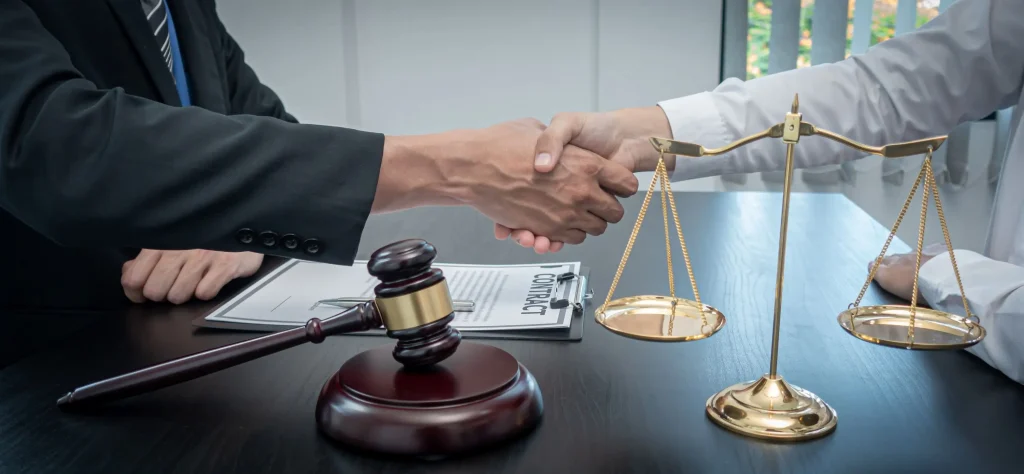In Arizona, the comparative negligence rule can affect how compensation is awarded in a car accident claim. You might still recover damages even if you share some fault.
Comparative Negligence Rule
Arizona follows a “pure comparative negligence” rule. This means even if you are 99% at fault in an accident, you can still recover 1% of the damages. Your compensation will be reduced by your percentage of fault.
For example, if your damages amount to $10,000 and you are 30% at fault, you would receive $7,000.
The pure comparative rule is significant because it allows for recovery even at high fault levels. This rule applies strictly, meaning that each party involved will have their fault evaluated separately.
Understanding how this percentage impacts your award is essential when navigating claims and legal discussions.
Why Hire an Arizona Attorney
Life can get complicated following a personal injury. Victims face a range of challenges, including high medical costs, insurance negotiations, and the need for treatment.
Balancing these responsibilities while trying to maintain normalcy is tough! Hiring a lawyer can help ease some of these burdens. Your attorney is focused on advocating for you, unlike the insurance companies.
It’s reassuring to have someone who truly cares about your well-being during difficult times. Whether your injury stems from a minor auto accident or something more significant, reach out to The Law Gang.
We can help regarding any type of personal injury claim in Arizona including:
You shouldn’t feel alone in this.

Partial Fault Claims
In a partially at-fault scenario, both parties might dispute their level of fault. It often involves insurance companies, lawyers, and sometimes a court to determine exact fault percentages.
For instance, when you file a claim, evidence such as witness statements and accident reports are considered to decide who was negligent.
Knowing your fault percentage is critical since it directly impacts your potential compensation. Having an accurate assessment is vital, and sometimes negotiations are necessary to agree on these percentages.
In such cases, seeking legal advice can be beneficial to protect your rights and ensure a fair calculation.
Auto accidents don’t just happen on the busy thoroughfares like Interstate 40 and the Superstition Highway but most commonly occur on the smaller surface roads like:
Claims With Partial Fault
When you are partially at fault in a car accident in Arizona, you can still make a claim for damages. Understanding how fault is assessed and the steps you need to follow is crucial.
Claim Process
First, you should report the accident to your insurance company. Describe the incident honestly and provide any evidence you have, like photos or witness statements.
In Arizona, being partially at fault does not prevent you from filing a claim; your compensation is adjusted based on your fault percentage.
Hiring a lawyer can be beneficial. They will help you understand your rights and negotiate with insurance companies. Legal guidance is often crucial to ensure you receive a fair settlement.
Your attorney can also handle communication and administrative tasks, making the process smoother for you.
The Law Gang manages personal injury claims for the whole of Arizona. With its combination of bustling cities, college towns, and serene rural areas, the state is diverse.
If you’ve faced an injury in any of these places, reach out to us.

Percentage of Fault Assessment
In Arizona, the comparative negligence rule is used to determine how much each party is responsible. Your compensation is reduced by the percentage you are found at fault.
For example, if you are 20% responsible, your recoverable damages are reduced by that amount.
A team of adjusters typically assesses the situation to decide on fault percentages. This can involve examining police reports, gathering statements, and reviewing all other evidence. It’s a detailed process, and accuracy is key.
Understanding how these percentages work helps you know what to expect financially. This knowledge prepares you to challenge any unfair fault assignment, ensuring a fair outcome.
Legal Representation
In Arizona, facing a car accident where you are partially at fault doesn’t mean you can’t seek compensation. Legal help can assist in navigating the complexities and maximize the chances of recovering damages.
Role of a Lawyer
A personal injury lawyer knows the ins and outs of Arizona’s comparative negligence law. They help you gather evidence, talk with insurance companies, and represent you in court if needed.
Lawyers ensure that fair fault percentages are assigned.
They communicate with the opposing party to negotiate settlements. Lawyers work to lower the percentage of fault attributed to you.
Their role is crucial in determining the best strategy to follow, protecting your rights throughout the process. This assistance can make a significant difference in the outcome of your claim.

Benefits of a Attorney
Hiring an attorney increases the chances of recovering a fair settlement. They evaluate all aspects of the accident, find witnesses, and bring expert testimony if needed.
With legal help, you can understand your rights better and have someone to take on the legal complexities.
Attorneys often have experience dealing with partial fault claims. They focus on minimizing your fault percentage. This can lead to more favorable compensation.
Having professional representation can also bring peace of mind during a stressful time, as you know someone is fighting for your best interests.
Statute of Limitations
Understanding how long you have to file a lawsuit after a car accident in Arizona is crucial. This includes both standard cases and those where you might be partially at fault.
General Limitations
In Arizona, the statute of limitations for filing a car accident lawsuit is typically two years. This means you have two years from the date of the accident to bring a claim.
If you miss this window, you might lose your right to seek compensation.
In some cases, like when a government entity is involved, the timeframe might be even shorter. It’s vital to act promptly and stay informed about these timelines to protect your rights.
Partial Fault Situations
Even if you are partially at fault, the two-year statute of limitations still applies. However, determining partial fault can be complex.
The courts use a method called “comparative negligence” to figure out how much responsibility each party has.
This rule affects your compensation. If your claim is valid but delayed, it could impact your ability to effectively argue your case in court, especially considering partial fault.
Always keep these timelines in mind when proceeding with a partially at fault claim.
The Law Gang serves all counties across Arizona for personal injury claims, ranging from car accidents to slip and falls to wrongful death cases. Counties within Arizona include:
- Yavapai
- Santa Cruz
- Pinal
Determining Fault
Determining who is at fault in a car accident can be complex. It involves investigations and different authorities to ensure a fair outcome for all parties involved. Understanding the process helps you prepare for what to expect.

Investigative Procedures
When a car accident occurs, various steps are taken to find out who is at fault. One key step is gathering evidence from the accident scene.
This includes taking photos, speaking to witnesses, and getting copies of the police report. Insurance companies and lawyers often review this evidence to build a clear picture of what happened.
You may be asked to provide your own account of the accident. It’s crucial to be honest and detailed in your description.
Investigators will look for clues like skid marks or the point of impact on the vehicles. Accident reconstruction experts might be used in complex cases to recreate the scenario.
Involved in Fault Determination
Many different authorities can play a role in determining fault in a car accident. Police officers are usually the first to evaluate the scene.
They collect initial evidence and sometimes issue citations. Their reports often carry significant weight in deciding fault.
Insurance adjusters also play a crucial role. They assess damage and review all reports, including witness statements. Lawyers might be involved if the case goes to court.
They help interpret the evidence and argue on behalf of their clients. Authorities aim to determine fault fairly based on evidence and laws.






